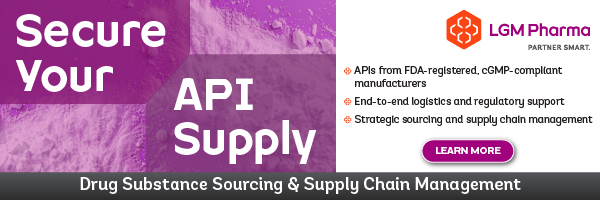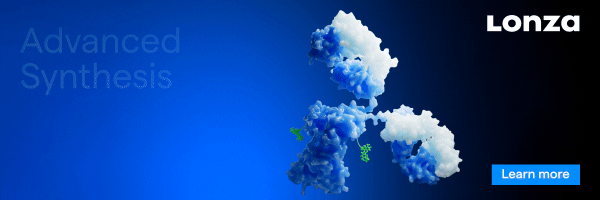A group of executives attended a round table discussion before CPHI Worldwide in Frankfurt. They were: Pieter Vercruysse (PV), Director Customer Success, Tjoapack; Michael Leuck (ML), Vice-President, Hongene Biotech; Bartłomiej Czubek (BC), Director of Business Development, Mabion; Martin Meeson (MM), CEO, Axplora; Eric Kaneps (EK), Vice-President, Sales & Marketing, Renaissance Lakewood; and Lisa Stasi (LS),Vice-President & General Manager Global Pharma Strategy & EU Region, Ecolab Life Sciences.
Q. How have you seen the global pharma market evolve over the past 12 months and what trends are you most closely watching?
![]()
![]()
 PV. Over the past 12 months, we’ve seen a clear shift toward innovation in biopharma and advanced therapies, alongside mounting pressure around cost containment. Macroeconomic factors, supply chain disruptions and the growing emphasis on regional manufacturing capacity have all shaped the market. At the same time, digitalisation, AI and data-driven decision-making are being adopted faster across R&D and clinical settings. The trends I’m most closely watching are the acceleration of personalised medicine, sustainability in manufacturing and the impact of regulatory changes around data and product transparency.
PV. Over the past 12 months, we’ve seen a clear shift toward innovation in biopharma and advanced therapies, alongside mounting pressure around cost containment. Macroeconomic factors, supply chain disruptions and the growing emphasis on regional manufacturing capacity have all shaped the market. At the same time, digitalisation, AI and data-driven decision-making are being adopted faster across R&D and clinical settings. The trends I’m most closely watching are the acceleration of personalised medicine, sustainability in manufacturing and the impact of regulatory changes around data and product transparency.
 ML. The pharmaceutical market has continued to evolve rapidly over the past year, with advanced modalities reshaping the innovation landscape. RNA therapeutics including mRNA-based medicines, siRNA, oligonucleotides and CRISPR gene-editing drugs are continuing their progression from early discovery into broader pipelines, driving unprecedented demand for high-quality raw materials and reliable CDMO partners. At the same time, global supply chains remain under scrutiny, as developers and regulators alike call for resilience, transparency and end-to-end traceability.
ML. The pharmaceutical market has continued to evolve rapidly over the past year, with advanced modalities reshaping the innovation landscape. RNA therapeutics including mRNA-based medicines, siRNA, oligonucleotides and CRISPR gene-editing drugs are continuing their progression from early discovery into broader pipelines, driving unprecedented demand for high-quality raw materials and reliable CDMO partners. At the same time, global supply chains remain under scrutiny, as developers and regulators alike call for resilience, transparency and end-to-end traceability.
At Hongene, we’ve positioned ourselves at the heart of this transformation by building a vertically integrated platform, from phosphoramidites, nucleotides, and enzymes through to CDMO services for oligonucleotide and mRNA manufacturing. This model allows us to mitigate the risks of fragmented supply chains and provide our partners with continuity from early research through commercial launch.
We’re also closely monitoring the expansion of large-patient indications within the cardiometabolic disease space, where siRNA drugs may soon require multi-ton manufacturing capacity. To meet this demand, Hongene has scaled infrastructure and advanced chemoenzymatic ligation technology, enabling high-purity, cost-effective and sustainable siRNA production at volumes previously unattainable.
Another trend capturing our attention is the advancement of targeted delivery. AbbVie’s acquisition of Capstan highlights growing interest in tLNP-based in vivo engineering, while Avidity’s partnership with Lonza secures capacity for antibody-oligonucleotide conjugates. These deals exemplify delivery as a critical frontier shaping both therapeutic potential and manufacturing strategy.
 BC. Over the past year, regulatory momentum has started to reshape biosimilar development. The FDA issued the first waiver of confirmatory clinical efficacy studies for a monoclonal-antibody biosimilar – elevating robust analytical and PK evidence – and the EMA’s reflection paper signals a similar, analytics-first direction. If sustained, this shift lowers barriers to entry, shortens timelines and broadens patient access.
BC. Over the past year, regulatory momentum has started to reshape biosimilar development. The FDA issued the first waiver of confirmatory clinical efficacy studies for a monoclonal-antibody biosimilar – elevating robust analytical and PK evidence – and the EMA’s reflection paper signals a similar, analytics-first direction. If sustained, this shift lowers barriers to entry, shortens timelines and broadens patient access.
In parallel, trade policies (US tariffs and potential EU counter-measures) are adding cost and supply-chain uncertainty. To manage this, companies are diversifying manufacturing footprints, including contract manufacturing outside tariff zones to protect economics and continuity. Layered on top are tighter capital markets and cost discipline, pushing sponsors to prioritise assets with clear differentiation.
Beyond classic mAbs, the pipeline mix is changing: ADCs and multi-specific antibodies are gaining share. I expect a growing portion of development programs to focus on these modalities, which will drive demand for specialised CMC capabilities.
 MM. Over the past year, two dynamics have stood out: the rapid rise of complex therapies such as GLP-1s and ADCs and the continued dominance of small molecules. GLP-1 demand is already outpacing supply, while ADCs are becoming a cornerstone of oncology innovation.
MM. Over the past year, two dynamics have stood out: the rapid rise of complex therapies such as GLP-1s and ADCs and the continued dominance of small molecules. GLP-1 demand is already outpacing supply, while ADCs are becoming a cornerstone of oncology innovation.
At the same time, small molecules remain the foundation of global pharma, accounting for the majority of prescriptions in areas such as cardiovascular, CNS and infectious diseases. Looking ahead, the challenge and the opportunity is twofold: scaling for the next wave of advanced therapies, while safeguarding the resilience of the small molecule supply chain that will continue to power most of the medicines of tomorrow.
 LS. Over the past year, the global pharma market has continued to shift towards more specialised, high-value therapies, particularly in biologics and personalised medicine. We’re seeing increased complexity in the supply chain and greater scrutiny on sustainability and regulatory compliance. One key trend we’re monitoring is how strategic partners are being expected to do more throughout the lifecycle of the drug. That’s pushing us to enhance not only our service offering, but also how we position and communicate our value to clients in a highly competitive space.
LS. Over the past year, the global pharma market has continued to shift towards more specialised, high-value therapies, particularly in biologics and personalised medicine. We’re seeing increased complexity in the supply chain and greater scrutiny on sustainability and regulatory compliance. One key trend we’re monitoring is how strategic partners are being expected to do more throughout the lifecycle of the drug. That’s pushing us to enhance not only our service offering, but also how we position and communicate our value to clients in a highly competitive space.
Q. Are there particular therapeutic areas or modalities where you see the most growth potential right now?
PV. Beyond the therapeutic advances themselves, we see enormous growth potential in drug packaging and delivery solutions. As individualised medicine continues to expand, the demand for customised packaging is rising rapidly – not just in terms of compliance and safety, but also in patient usability. A major focus at Tjoapack is on injectables: traditionally, we have supported vials, but the market demand for more complex packs has clearly grown. Tjoapack now also offers automated packaging of prefilled syringes and more recently labelling and packaging of autoinjector pens. These formats are critical for patient-centric care, as they enable self-administration and improve adherence. For us, the real growth lies in providing end-to-end solutions that adapt to evolving modalities while keeping scalability and regulatory requirements front of mind.
ML. From our perspective, the most dynamic growth in nucleic acid therapeutics is in siRNA and mRNA-based medicines. Cardiometabolic siRNA programs targeting genes such as PCSK9, ApoC3, AGT and Lp(a) are advancing rapidly toward commercial approval. These therapies could serve tens of millions of patients worldwide, requiring unprecedented production capacity for RNA therapeutics.
Equally exciting are innovations in targeted delivery and advanced modalities, including personalised cancer vaccines, in vivo CAR-T therapies and CRISPR-based gene editing drugs that require long guide RNAs. Clinical adoption of technologies that enhance the potency and durability of the mRNA payloads of these drugs is accelerating, creating new opportunities for transformative treatments.
Hongene is uniquely positioned to support these innovations. With vertically integrated capabilities spanning raw material production through GMP oligonucleotide and mRNA CDMO services, and with chemoenzymatic ligation technology for high-purity siRNA and sgRNA manufacturing, we provide end-to-end scalable solutions that minimise risk and accelerate timelines.
By combining next-generation technologies with world-leading vertically integrated manufacturing capacity, Hongene ensures RNA therapeutics are not only scientifically viable, but also manufacturable at the scale needed for global patient access and impact.
BC. The strongest growth in the pharmaceutical market is being driven by therapeutic advances in biologics, coupled with rapid progress in bioprocessing and analytical sciences. Discoveries in drug characterisation – such as high-resolution mass spectrometry, next-generation chromatography and novel potency bioassays – are enabling developers to better define molecular attributes earlier in the pipeline. At the same time, new types of bioreactors optimised for high-productivity cell lines are making large-scale biologics manufacturing more efficient and cost-effective. These innovations directly support the expansion of advanced biologic therapies, particularly orphan drugs for rare diseases, which continue to benefit from regulatory incentives and high unmet medical needs.
Monoclonal antibodies remain the leading biologics segment and will continue to be central to innovation in the coming decade. They are not only the backbone of many oncology and immunology pipelines, but are also being investigated in newer areas such as neurodegenerative and metabolic diseases. The ability of mAbs to combine high specificity with predictable safety and efficacy makes them a modality that will retain strategic importance for both innovators and biosimilar developers.
Beyond traditional mAbs, novel modalities are generating significant momentum. ADCs represent one of the most exciting areas, with the market expected to grow at an estimated 20% compound annual growth rate. Their targeted approach to delivering cytotoxic payloads directly to cancer cells has shown encouraging results in breast, lung and hematological malignancies, and more indications are under investigation. This precision reduces systemic toxicity, making ADCs a highly attractive class.
Multi-specific antibodies are another promising modality, designed to bind multiple targets or bridge distinct cells simultaneously. This creates novel therapeutic mechanisms, particularly in oncology and immune-mediated diseases, where redirecting immune cells against tumour cells has demonstrated early clinical success. As clinical pipelines mature, multi-specific antibodies could redefine standards of care in complex diseases.
Finally, the biosimilar market is poised for significant growth as key patents expire later this decade. By 2027, products such as Sylvant (siltuximab) and Portrazza (necitumumab) will face competition, followed in 2028 by Opdivo (nivolumab) and Tecentriq (atezolizumab). Between 2029 and 2030, additional blockbusters like Ocrevus, Imfinzi, Bexxar, Illumetri, Emgality and Arzerra will lose exclusivity. This wave of expirations will expand patient access by delivering lower-cost alternatives, while intensifying competition and driving efficiency across the biopharma value chain. For Mabion, this represents a significant opportunity to leverage our biologics expertise to support both innovators and biosimilar developers in bringing these therapies to market.
MM. Again, there are two areas in particular which lots of people are focusing on and indeed where we are increasing capacity and capability to support our customers: GLP-1 peptides and ADCs. Both are high-growth, high-complexity segments where demand is expanding faster than supply.
But while it’s natural to be excited about new modalities, we should not forget that small molecules still represent the vast majority not only of the medicines that patients use today, but of the drugs of the future too. That’s why we continually work to strengthen our small molecule capacity.
This aligns with our investment strategy. We’re not just expanding capacity for its own sake, we’re tailoring it to where customers need us most, supporting both the breakthroughs of tomorrow and the essential therapies of today. That relentless focus on customer needs ensures our growth is sustainable, strategic and directly linked to the success of the world’s leading innovators.
EK. We’re seeing significant growth in the field of nasal drug delivery, particularly with the emergence of nose to brain delivery technologies. Traditionally used for localised conditions such as allergies or congestion, nasal sprays are now being developed to target central nervous system (CNS) disorders, pain management and even neurodegenerative diseases. A major driver of this innovation is the growing body of research supporting direct nose to brain delivery pathways. One notable example is the Wake Forest study that successfully mapped the olfactory and trigeminal nerve pathways, key routes for delivering therapeutics directly to the brain. These findings are opening doors to new indications previously limited by the blood brain barrier. As a CDMO with extensive expertise in nasal spray development and manufacturing, Renaissance Lakewood is well-positioned to support our partners with exploring these cutting-edge applications. We’re seeing increasing interest from our clients in exploring both new chemical entities via nasal spray delivery, as well as reformulation to nasal of existing small molecule drugs. With the convergence of novel formulations, new excipients and device advancements, nasal drug delivery is evolving into a versatile platform for CNS and systemic therapies. We anticipate this modality will continue to grow across a wide range of therapeutic areas, from psychiatry to neuroinflammation and rare diseases.
LS. We’re seeing significant growth in ATMPs, particularly cell and gene therapies. These areas demand highly controlled manufacturing environments and impeccable contamination control, which aligns well with our core capabilities. We’re also seeing increased activity in oncology and rare diseases, where the pressure to innovate and scale quickly creates opportunities for agile, quality-driven partners like us.
Q. How is the increasing demand for patient-centric care influencing your business strategy?
PV. Patient-centric care means focusing not only on therapeutic efficacy, but also on accessibility, convenience and long-term support throughout the treatment journey. For us, that translates into developing delivery formats that enable at-home use, building stronger collaborations with patient organisations and integrating digital health solutions to improve adherence and monitoring. Bringing the patient’s voice into the development process at an early stage is central to our strategy.
ML. Patient-centricity is fundamentally reshaping how nucleic acid therapeutics are developed and delivered, and it directly informs Hongene’s strategy. Patients expect high-quality medicines that are safe, cost-effective and accessible at scale. For RNA-based drugs, this requires manufacturing partners who can provide continuity from early research to commercial production.
Our vertically integrated model was built with this in mind. By unifying raw materials, GMP drug substance and drug product capabilities within a single organisation, we eliminate supply handoffs that can delay development or compromise traceability. This ensures smoother progression from concept to clinic and faster delivery to patients.
We also recognise that large-patient indications, such as cardiometabolic disease, will test the limits of global supply. To serve these populations, we’ve invested in high-capacity infrastructure and next-generation enzymatic technologies that enable sustainable, large-scale manufacturing.
By embracing patient-centric principles and advancing our partners’ science with speed and reliability, we help ensure their medicines achieve full potential for patients worldwide.
What impact is the rise of biopharma and advanced therapies having on your supply chain and manufacturing decisions?
Advanced therapies can benefit from a fundamentally different supply chain model, one that integrates technical depth, regulatory rigour and scalability. At Hongene, this has driven major investments in global, vertically integrated manufacturing infrastructure, enabling control from nucleoside raw materials to finished oligonucleotide and mRNA drug products. This model enhances resilience by reducing dependence on fragmented vendor networks and enables full batch-level traceability – a regulatory expectation. It also allows us to meet diverse customer needs, from the aggressive timeline expectations of small biotech to multi-ton manufacturing for global pharma.
Our supply chain strategy is also guided by technology innovation. Chemoenzymatic ligation enables high-purity siRNA and sgRNA production at scale, with improved sustainability compared to traditional synthesis methods. Our structure-guided mRNA chemistry designs are increasing the duration and potency of drugs such as PCVs. Innovations like these position us not just as a supplier, but as a strategic enabler of next-generation RNA therapeutics.
As biopharma advances, we have evolved far beyond raw materials into a full-service CDMO and innovator, enabling partnerships that bring some of the world’s most advanced medicines to patients.
BC. The demand for patient-centric care is transforming how therapies are developed, manufactured and delivered and this has direct implications for our business strategy. Patients today expect not only effective medicines, but also treatments that are easier to access, administer and integrate into their daily lives. This has shifted the focus toward therapies that minimise hospital stays, reduce treatment burden and improve quality of life, which in turn shapes how we work with our partners across the value chain.
One clear outcome is the rising demand for alternative formulations and delivery routes. Monoclonal antibodies remain the cornerstone of biologics and continue to expand their clinical footprint. In oncology, PD-1/PD-L1 inhibitors like pembrolizumab and nivolumab are no longer reserved for late-stage cancers, but are increasingly approved in earlier lines of therapy and across multiple tumour types. Similarly, in autoimmune diseases, TNF and IL-17 inhibitors are being positioned in earlier treatment algorithms, often supported by real-world evidence demonstrating durable efficacy and safety.
Patient-centricity also drives our focus on rare and orphan diseases. Many of these conditions affect small, highly specific populations with significant unmet needs. The ability to rapidly scale flexible bioprocesses for orphan drugs is critical to ensure timely patient access.
Like I previously said, emerging modalities such as ADC and multi-specific antibodies also fit within this patient-centric framework. In addition, the growing biosimilar market adds another layer of patient-centric impact.
MM. Patient-centric care has become one of the defining forces shaping pharma and, by extension, CDMOs. It demands greater agility, speed and reliability in development and supply.
For Axplora, this means expanding flexible, multi-purpose facilities that can serve both early-phase clinical projects and large-scale commercial programs. That ability to pivot between scales ensures we support customers as their therapies progress and ultimately helps bring medicines to patients faster.
However, patient-centricity isn’t only about timelines. It also means embedding responsibility and sustainability into how we operate. Our investment program goes hand-in-hand with local job creation, community engagement and greener manufacturing practices such as solvent reduction. Patients, regulators and society expect us to balance growth with responsibility.
Above all, patient-centricity reinforces our mindset: start by asking what customers and their patients need, not by focusing solely on what we are already good at. That is the anchor of our business strategy.
EK. The growing demand for patient-centric care is reshaping how therapies are developed and delivered, and nasal spray technology is naturally aligned with this shift. Patients want treatments that are less invasive, easier to administer and more compatible with their daily lives. Nasal sprays meet all three criteria. They are self-administered, needle free and do not require a healthcare provider. This supports greater independence and better dosing adherence, especially for chronic and long-term conditions. This is particularly important as we see nasal delivery expanding into new indications like acute rescue therapies, depression and even seizure management. Nasal sprays excel where fast, at-home administration is critical. At Renaissance Lakewood, we’re seeing increased demand from partners developing patient-ready nasal spray products that are shelf stable, portable and intuitive to use. As the healthcare landscape shifts toward at-home and self-care models, we believe nasal drug delivery will play a pivotal role in making advanced therapeutics more accessible and less burdensome to patients. The drug’s effectiveness depends not only on the API, but also on the patient’s correct usage.
LS. Patient-centric care is transforming expectations across the value chain, including how and where therapies are produced. We’re continuously adapting by focusing on speed, flexibility and quality. This means enabling our clients to reduce time to market whilst maintaining compliance and patient safety. We’re also delivering solutions to support smaller, more targeted batches and decentralised manufacturing models that reflect the direction of patient-centred innovation.
Q. What impact is the rise of biopharma and advanced therapies having on your supply chain and manufacturing decisions?
PV. Advanced therapies require more flexible, smaller-scale and highly specialised manufacturing capabilities. This is reshaping our supply chain, with greater emphasis on scalability, traceability and quality. We’re seeing a move toward decentralised and, in some cases, personalised production. That calls for close collaboration with specialised CDMOs, investments in single-use technologies and digital twins, and building redundancy into supply networks to reduce risk.
BC. The rise of biopharma is reshaping supply chain and manufacturing strategies across the industry. Unlike small molecules, biologics require highly specialised processes and infrastructure, pushing companies to build greater flexibility, resilience and technical expertise into their operations.
At Mabion, this has meant investing in modular and platform-based biomanufacturing and bioprocessing capabilities. Developing adaptive facilities enables us to handle a diverse range of projects without compromising on quality or speed.
The volatility of global supply chains makes diversification essential and supply chain resilience has become a critical factor. The Covid-19 pandemic exposed vulnerabilities in global sourcing of raw materials, consumables and critical components such as single-use systems. Building relationships with reliable CDMOs that implement redundancy in sourcing strategies ensures client needs are met even in times of disruption.
Another key impact is the growing emphasis on GMP-grade materials and advanced analytics. Innovative therapies often require new assays, custom reagents and specialised cold-chain logistics. To address these evolving needs, we have expanded our quality systems and invested in strategic partnerships.
MM. The rapid growth of advanced therapies is driving us to reimagine supply chains and manufacturing models. Customers need assurance that their therapies will be delivered on time, at scale and in compliance with evolving global regulations. At the same time, small molecules continue to account for the bulk of global demand and that dual reality drives our strategy.
Our approach is threefold. First, we are investing across our manufacturing sites, increasing our capacity, ensuring proximity to key markets and reducing reliance on distant supply routes. Second, we’re diversifying raw material sources and supplier networks to mitigate risk and improve continuity across both traditional and advanced therapies. Third, we’re engaging early with regulators so we’re prepared not just for today’s standards, but for tomorrow’s as well.
By combining scale and resilience in small molecules with targeted investments in peptides and ADCs, Axplora is ensuring we are ready for the therapies of the future without compromising the medicines patients depend on today.
LS. The rise of biopharma and advanced therapies reinforces our commitment to strategic and proactive planning across our own operations. These therapies require different manufacturing conditions, higher levels of sterility assurance and agile supply chains. We’re investing in specialised capabilities and looking closely at how we partner with clients to meet them and solve challenges at any stage in their development cycles by offering more integrated, end-to-end support.
What do you look for in a strategic partner at CPHI and beyond?
PV. We look for partners who combine innovation with reliability. Key criteria include technological complementarity, a shared commitment to quality and sustainability and the agility to adapt to a fast-changing industry. Transparency, long-term engagement and a willingness to co-invest in new platforms or markets are crucial. At CPHI and beyond, we’re not only evaluating technologies, but also seeking cultural alignment and the ability to create real value together.
ML. At Hongene, strategic partnerships are about more than transactions, they reflect a shared commitment to advancing transformative medicines. Our mission is to continuously innovate to make RNA medicines accessible and affordable for patients worldwide. We seek partners who value long-term collaboration and share our vision.
Because we support programs from discovery to commercial launch, we value partners who recognise the benefit of simplifying supply chains, accelerating timelines and enhancing regulatory compliance through vertical integration.
Innovation is at the core of our partnerships. We’re investing in next-generation technologies like chemoenzymatic ligation and structure-guided mRNA designs to advance the future of nucleic acid development. Partners who share this forward-thinking mindset will find in Hongene a collaborator dedicated to enabling their science and delivering maximal impact for patients globally.
BC. When we think about strategic partnerships, we look beyond transactional relationships. For Mabion, the ideal partner shares a long-term vision and is committed to collaboration throughout the product lifecycle. This means engaging early in development, aligning on regulatory strategy and working together to anticipate scale-up and commercialisation challenges.
Trust and transparency are essential. We value partners who view us as an extension of their team and who are open about their needs, expectations and challenges. In return, we commit to the same level of openness. This foundation allows us to solve problems together and accelerate timelines without compromising quality.
Another key factor is scientific and technical complementarity. We look for partners who bring innovative pipelines and modality expertise that align with our biologics development and manufacturing. By combining our strengths, we can create differentiated solutions that bring therapies to patients faster and more reliably.
By working with like-minded companies, we not only advance science, but also build resilient, ethical, and sustainable supply chains. At CPHI and beyond, these shared values are what define true strategic partnerships for Mabion.
MM. We value partnerships built on trust, shared innovation, and a long-term vision.
The most successful collaborations happen when customers involve us early – from development through to commercial supply. That’s when we can co-develop solutions, accelerate timelines and design end-to-end strategies that truly meet patient needs. This year, we have announced over E100 million of investment across our sites. This is a prime example of how co-creation with customers leads to stronger outcomes.
At CPHI, we want to connect with companies that share this mindset. We’re seeking partners who see value in collaboration, who are open to tackling complexity together, and who understand that speed and reliability are competitive advantages in today’s market. Above all, we’re looking for relationships where we can relentlessly focus on understanding customer needs because that’s where Axplora delivers its best work and where together we can bring life-changing medicines to patients faster.
LS. We value customer partnerships that are rooted in transparency, shared goals and a long-term view of success. At CPHI and beyond, we’re looking forward to meeting with our customers to discuss their desired outcomes and share our latest innovations and solutions to help them get there. We are always looking for customers who partner to grow with us, who see value in early engagement, co-innovation and a relationship that evolves with the market.


